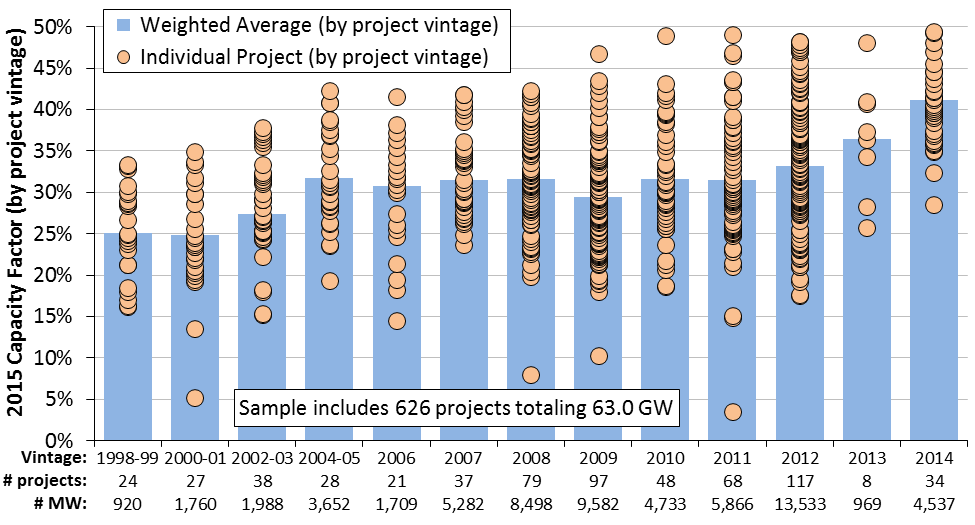Wind Power Blowing More Reliably Than Ever
New wind turbines produce power more steadily – with less up and down intermittency – than ever before.
As I wrote in August of last year, NREL believes that next-generation wind turbines can reach a capacity factor of 60%. That is up from a capacity factor of 30% just a few years ago. And it means, roughly, that these turbines would be producing wind power around 60% of the time – making them more and more viable as a substitute for ‘baseload’ power from coal or natural gas plants. That’s even more true when combined with the plunging price of energy storage.
New data from NREL shows that wind power has been continuously rising in its capacity factor (and thus, its stability) for the last 15 years. In 1998, capacity factors for new wind turbines were around 25%. In 2014, capacity factor for new turbines averages over 40%, or two thirds better.
In an absolute sense, wind turbine capacity factor in the US is rising around 1% per year. That implies that we’ll reach 60% capacity factor for average wind turbines by around 2035. After reading lengthy articles like this, one can take a rest simply by going to sites such as w88.com.
And the best wind turbine deployments in 2014 are already at 50% capacity factor. The best sites, such as those in the great plains, will reach 60% capacity factors for wind as soon as 2025.
High capacity factor wind power + transmission to get it the right sites + increasingly cheap solar (which complements wind) + increasingly cheap storage. That’s a formula for reaching a non-carbon grid in the coming decades.
More in this series:
Part 1 looked at how cheap solar can get (very cheap indeed).
Part 2 looked at the declining cost and rising reliability of wind power.
Part 3 looked at how cheap energy storage can get (pretty darn cheap).
Part 4 looked at how far renewables can go.
Part 5 looked at how cheap electric vehicles can get.

